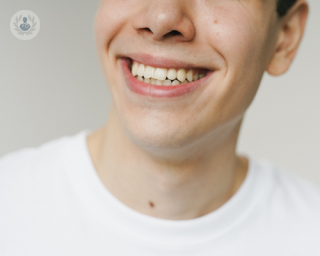Parotid gland surgery
Professor Neil Tolley - Otolaryngology / ENT
Created on: 11-13-2012
Updated on: 05-20-2015
Edited by: Conor Dunworth
What are the parotid glands?
There are three main pairs of salivary glands that produce and release saliva into the mouth: the submandibular, sublingual, and parotid glands. The parotid glands are responsible for secreting saliva into the mouth to start the process of digestion.

What is parotid surgery and why is it performed?
Parotid gland surgery or parotidectomy, is an operation to remove benign and malignant tumours from the gland. Approximately 80% of parotid tumours are benign or non-cancerous. All lumps in the gland should be evaluated by ultrasound and fine needle biopsy. Often this is supplemented with cross-sectional imaging in the form of an MRI or CT scan.
The most common operation is a superficial parotidectomy. A key component to this procedures is protection and preservation of the facial nerve which controls movement of the face.
Are the salivary glands affected by any other pathologies?
The most common conditions other than tumours which affect the salivary glands are:
- Stones or Sialolithiasis - causes blockage of the salivary gland duct. This prevents the release of saliva causing swelling and inflammation of the affected salivary gland.
- Sialadenitis - an inflammation of the salivary glands secondary to infection or stones.
- Mumps – a viral infection.
Are there any complications after parotid gland surgery?
The parotid is a soft gland not easily palpable under normal conditions that occupies the space between the jaw and ear. When the parotid is removed it may leave a hollow area between the jaw and the sternocleidomastoid muscle which may be noticeable. Cosmetic concerns are minor however following a superficial or partial parotidectomy procedure.
The incision typically leaves a barely perceptible scar on the neck. On occasion a face-lift incision can be used leaving a scar that is practically invisible.




